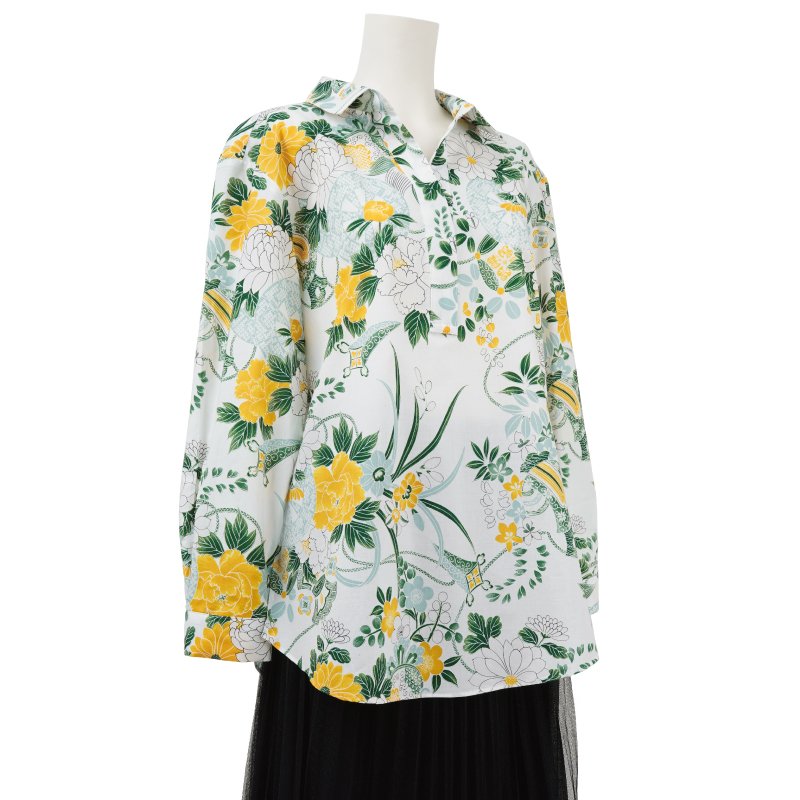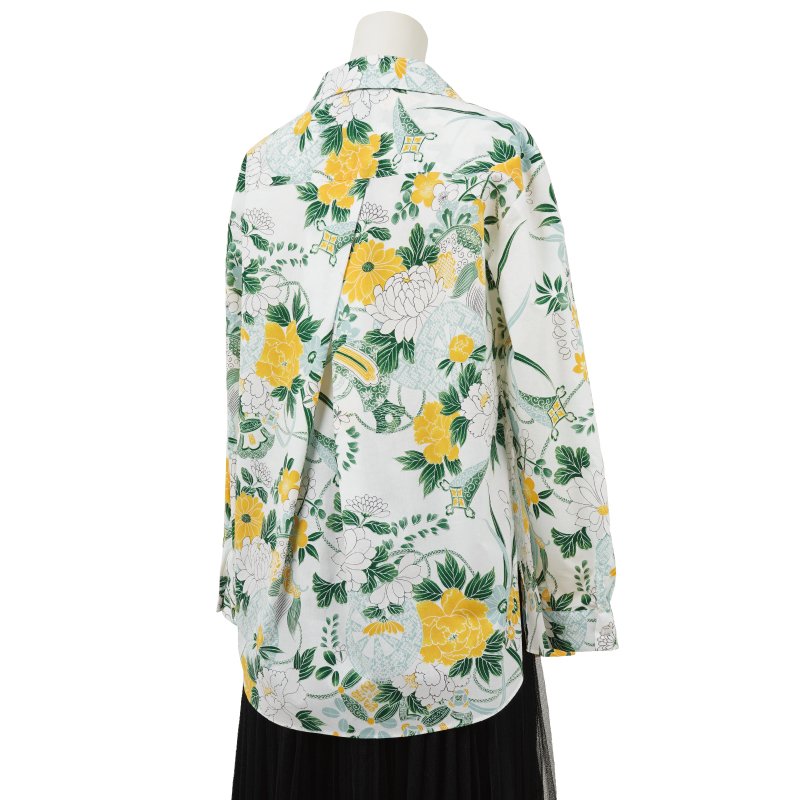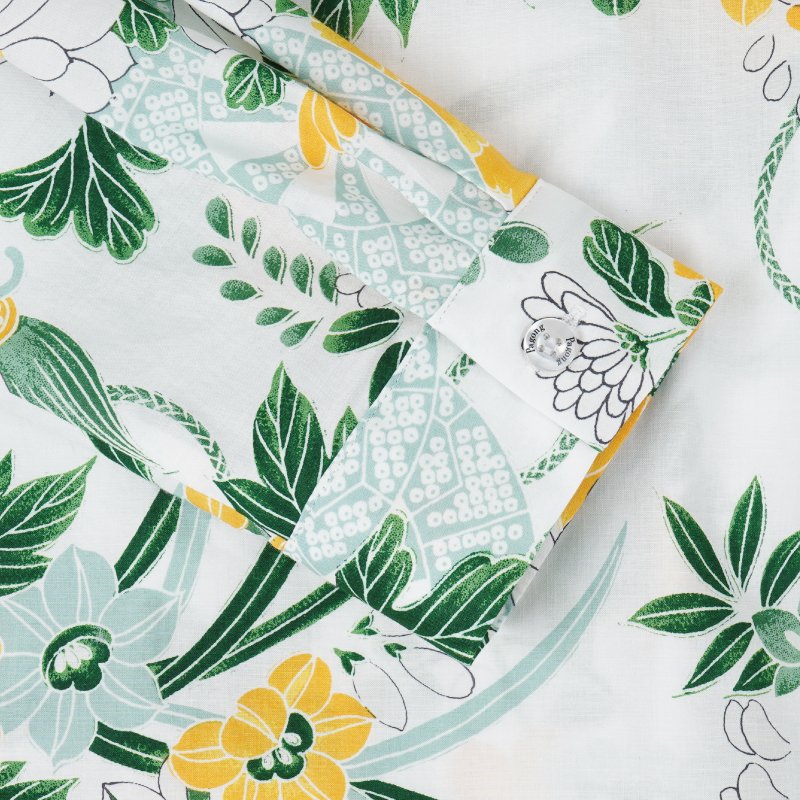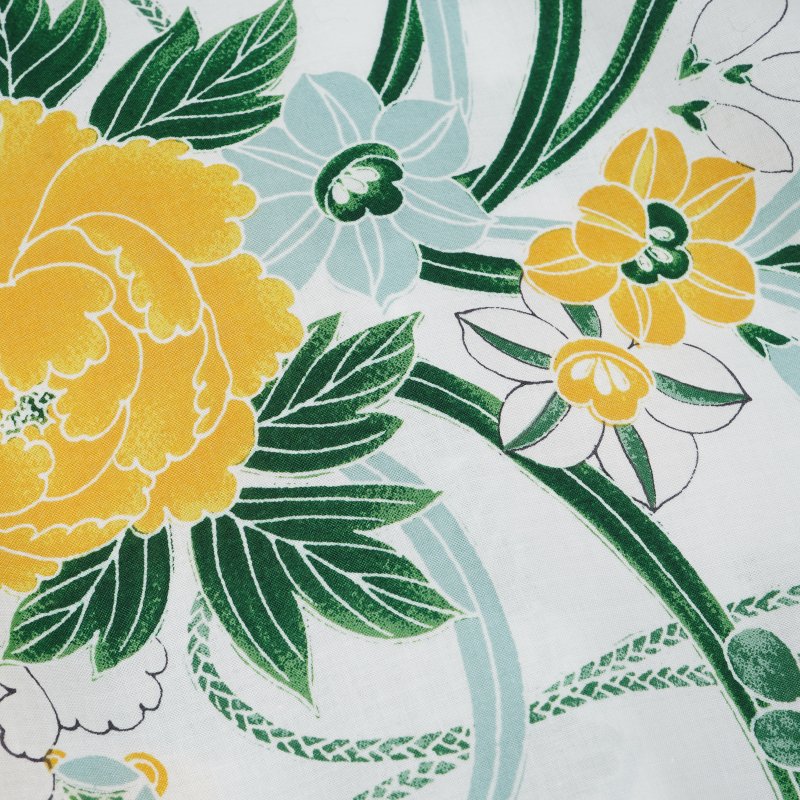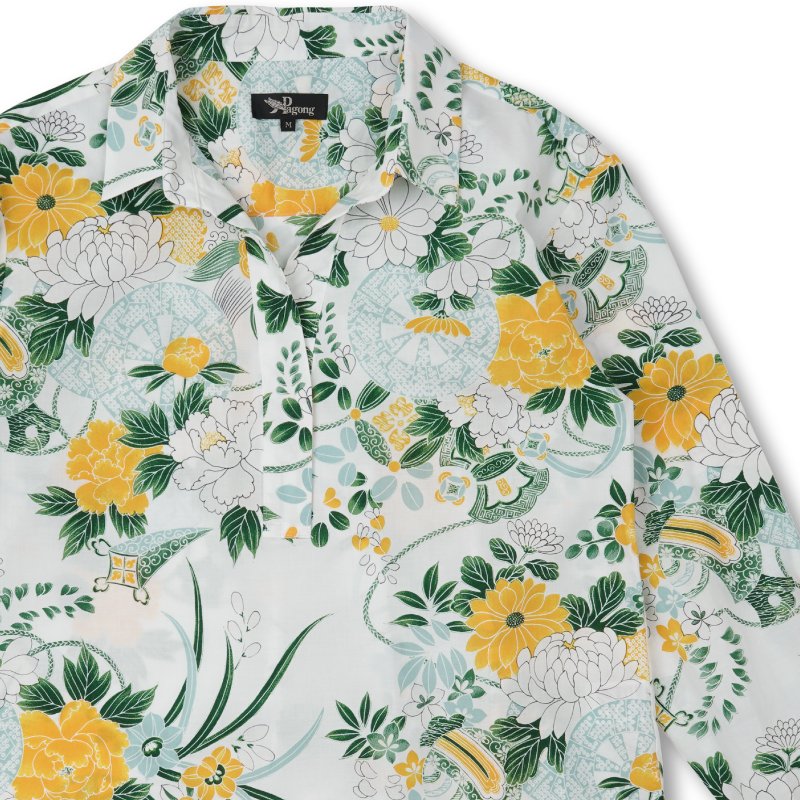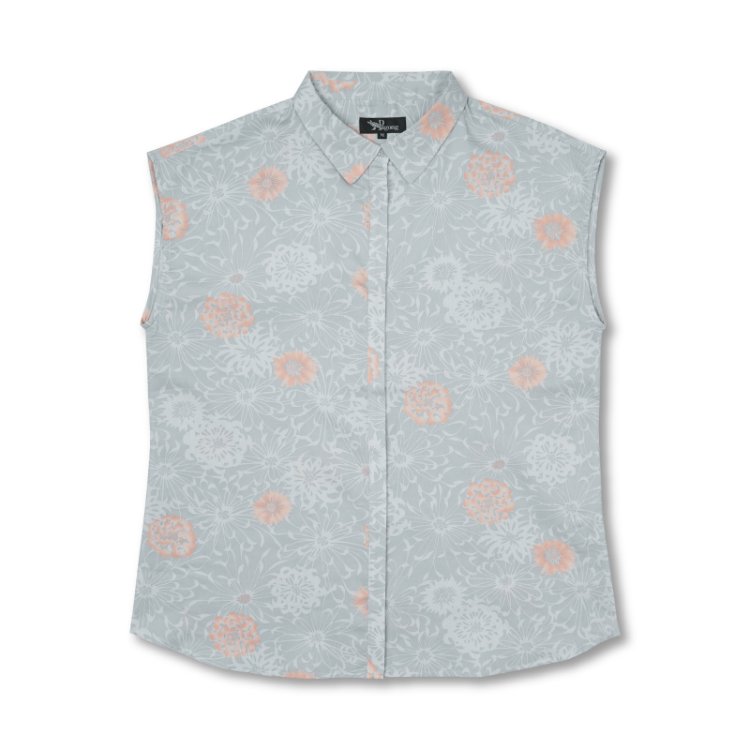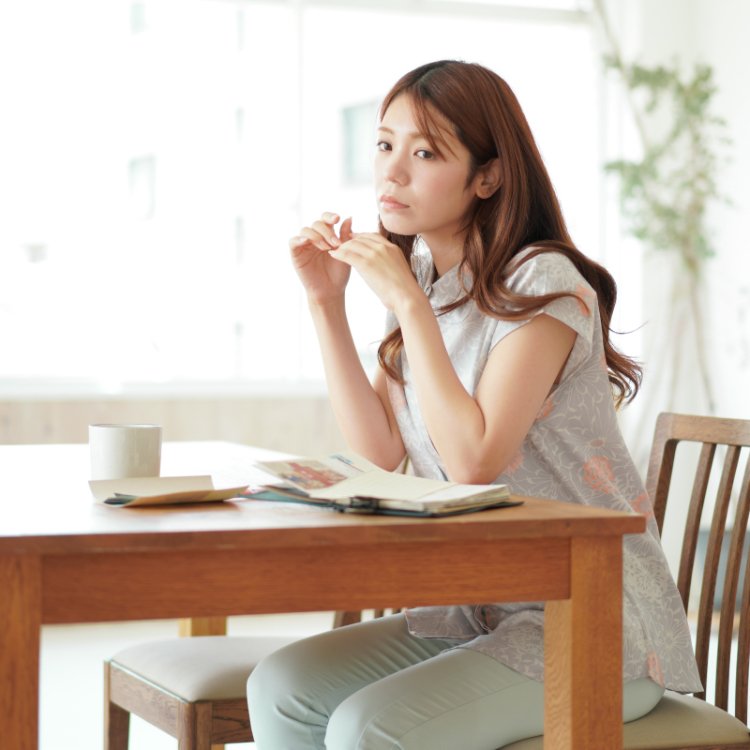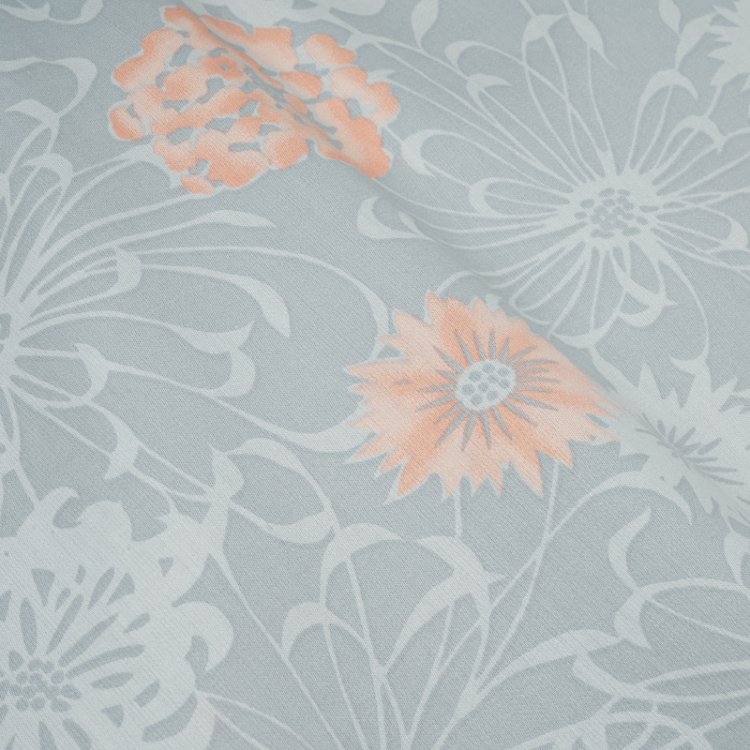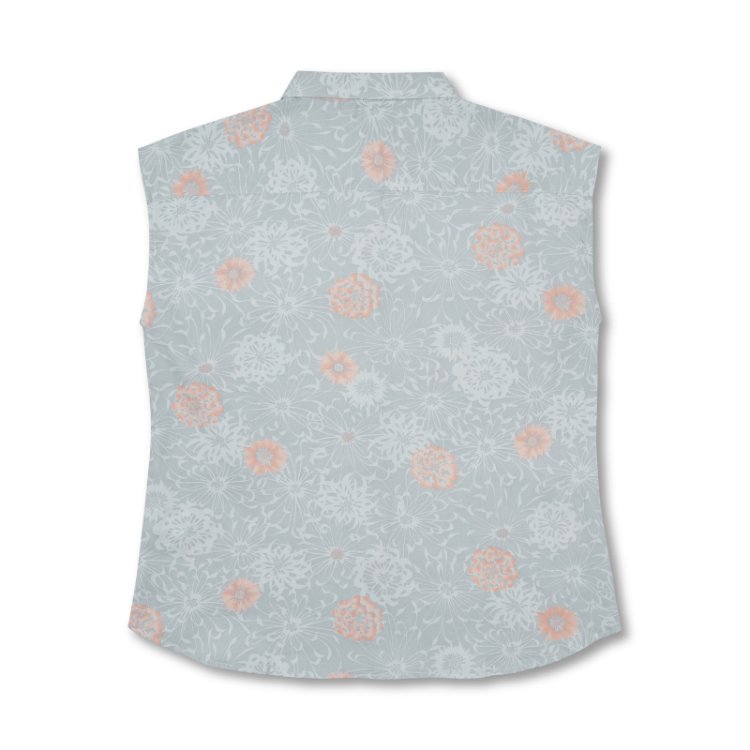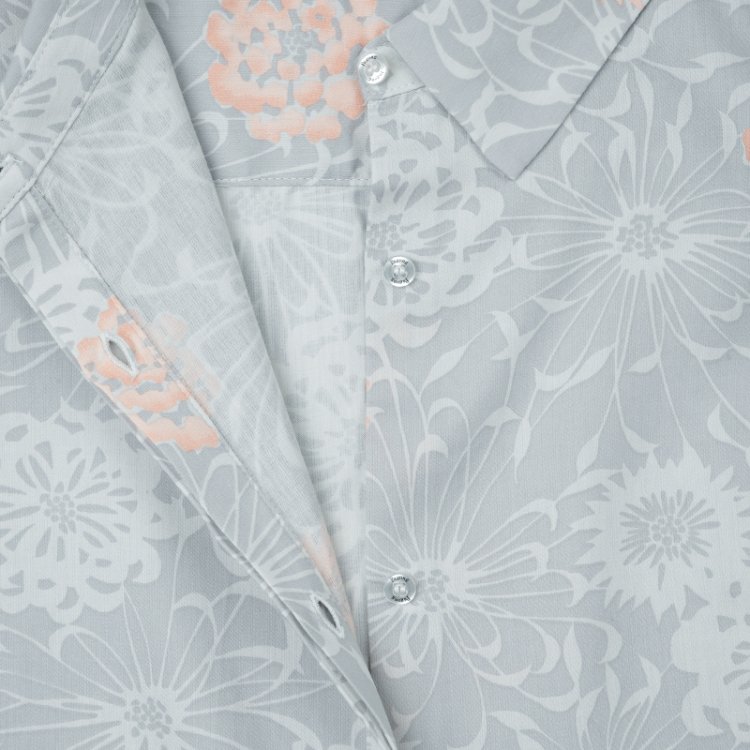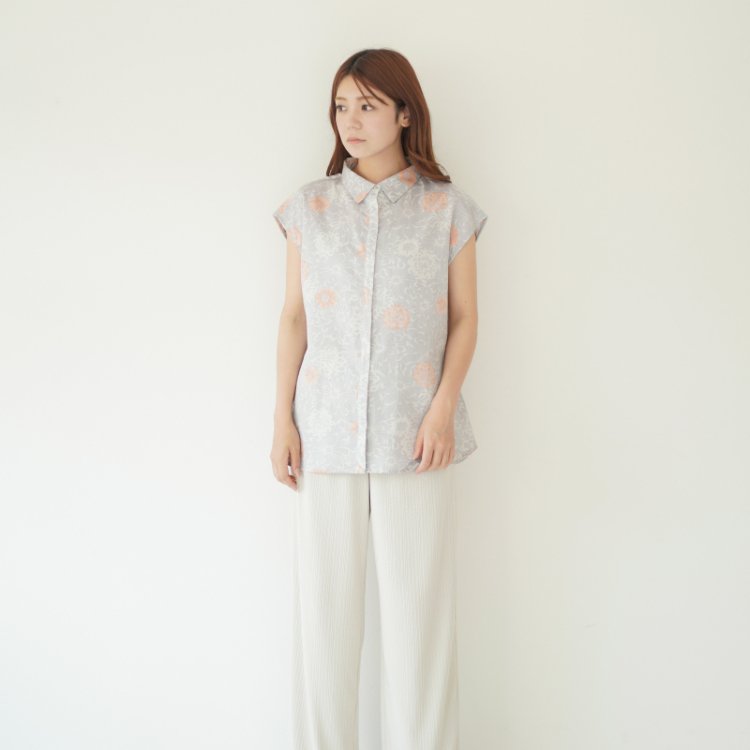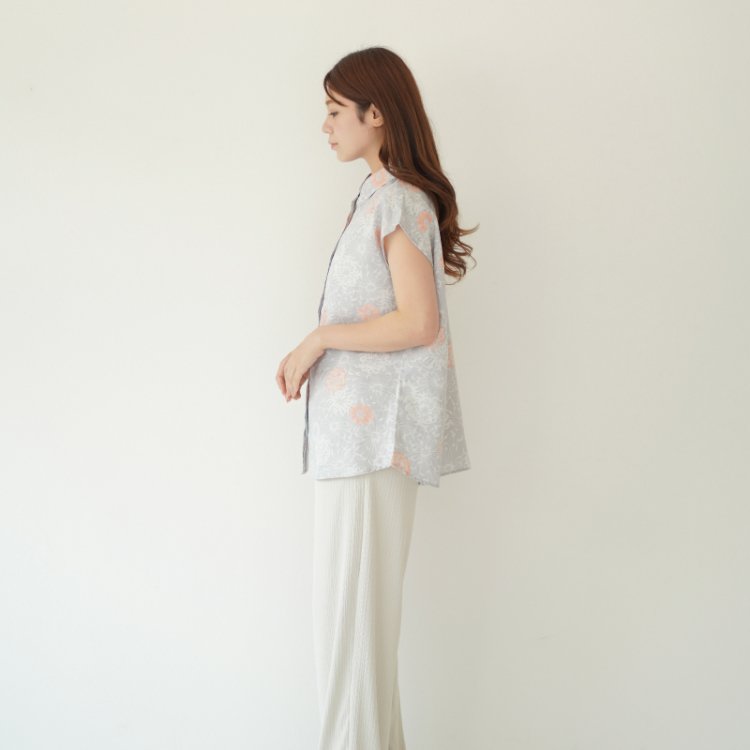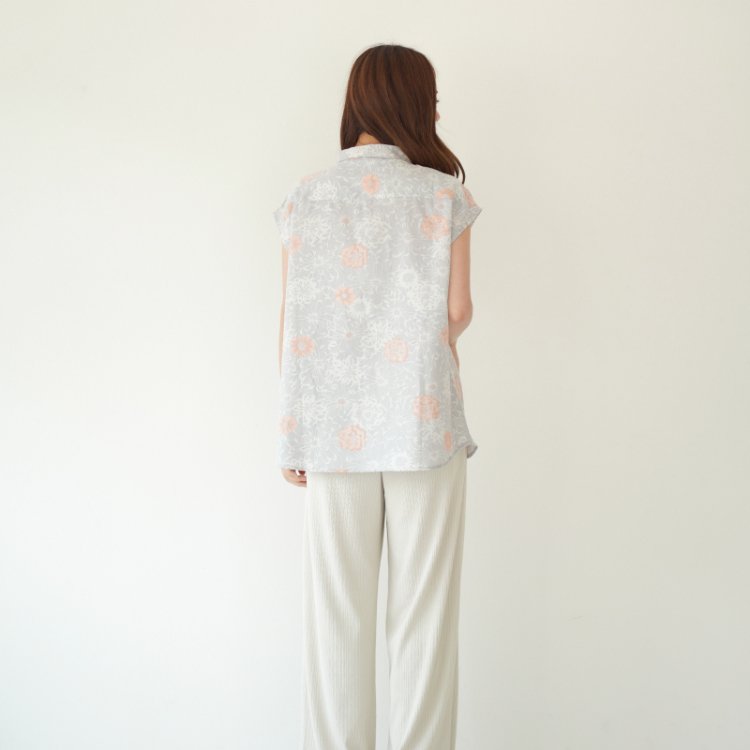 Image 1 of 6
Image 1 of 6

 Image 2 of 6
Image 2 of 6

 Image 3 of 6
Image 3 of 6

 Image 4 of 6
Image 4 of 6

 Image 5 of 6
Image 5 of 6

 Image 6 of 6
Image 6 of 6







HANAGURUMA "Imperial Cart Filled With Seasonal Flowers" SHIRT
Color / Black Care Instruction
Japanese name/ <花車> HANAGURUMA
-About-
Most traditional Japanese patterns found on kimono date back to the 7th and 8th centuries and are inspired by nature, of which symbolism with a hidden meaning is very strong within the Japanese culture.
The “Hanaguruma” pattern is meant to represent small carts, “guruma” filled with seasonal flowers or “hana”. These carts were only used by the imperial family and nobility living in and around the imperial palace in Kyoto.
The “botan”, or peony is a flower of protection since its scent is said to ward off evil. The “kiku” or chrysanthemum is a symbol for the emperor and appears on the Japanese imperial seal.
When represented together, these flowers symbolize a future destined to be blessed with longevity, vitality, and zest for living.
・Cotton 100%
・Made in Japan
・Hand-wash
・Model ( 5 feet, 3 inches )
Currency : US Dollar (USD)
Color / Black Care Instruction
Japanese name/ <花車> HANAGURUMA
-About-
Most traditional Japanese patterns found on kimono date back to the 7th and 8th centuries and are inspired by nature, of which symbolism with a hidden meaning is very strong within the Japanese culture.
The “Hanaguruma” pattern is meant to represent small carts, “guruma” filled with seasonal flowers or “hana”. These carts were only used by the imperial family and nobility living in and around the imperial palace in Kyoto.
The “botan”, or peony is a flower of protection since its scent is said to ward off evil. The “kiku” or chrysanthemum is a symbol for the emperor and appears on the Japanese imperial seal.
When represented together, these flowers symbolize a future destined to be blessed with longevity, vitality, and zest for living.
・Cotton 100%
・Made in Japan
・Hand-wash
・Model ( 5 feet, 3 inches )
Currency : US Dollar (USD)
Color / Black Care Instruction
Japanese name/ <花車> HANAGURUMA
-About-
Most traditional Japanese patterns found on kimono date back to the 7th and 8th centuries and are inspired by nature, of which symbolism with a hidden meaning is very strong within the Japanese culture.
The “Hanaguruma” pattern is meant to represent small carts, “guruma” filled with seasonal flowers or “hana”. These carts were only used by the imperial family and nobility living in and around the imperial palace in Kyoto.
The “botan”, or peony is a flower of protection since its scent is said to ward off evil. The “kiku” or chrysanthemum is a symbol for the emperor and appears on the Japanese imperial seal.
When represented together, these flowers symbolize a future destined to be blessed with longevity, vitality, and zest for living.
・Cotton 100%
・Made in Japan
・Hand-wash
・Model ( 5 feet, 3 inches )
Currency : US Dollar (USD)
=SIZE (inches)=
| Chest | Shoulder Width |
Body Length |
Sleeve Length |
Sleeve Opening |
|
| M | 38.5 | 15 | 25.5 | 24 | 7.5 |
| L | 41 | 15.3 | 26.5 | 24.5 | 8 |
| LL | 42.5 | 16 | 27.5 | 24.8 | 9.5 |



























